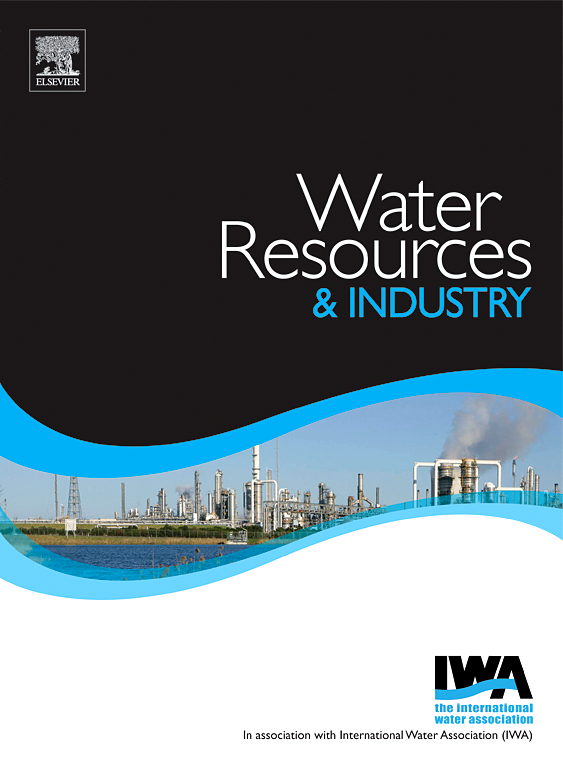Si-N doped eucalyptus biochar supported TiO2-ZnO (Si-N@EBC/3TiZn) as novel solar light responsive photocatalyst for enhanced degradation of cationic dye in aqueous solution
IF 7.5
3区 工程技术
Q1 WATER RESOURCES
引用次数: 0
Abstract
A novel Si-N@EBC/3TiZn composite was developed, analyzed and utilized as a photocatalyst for methylene blue (MB) degradation. The Si-N@EBC/3TiZn at various compositions of Si-N@EBC was investigated and exhibited excellent photoactivity for degradation reaction when the Si-N@EBC composition in the photocatalyst was 30%. Textural analysis showed that 30%Si–N@EBC/3TiZn was a mesoporous material with 80.3 m2/g specific surface area and 19.3 nm pore diameter, while optical analysis showed a remarkable reduction in the band gap of the sample, making it a solar light responsive photocatalyst. The percent MB removal from the photodegradation process was 98.61 0.21% at optimal initial MB concentration of 24.7 mg/L, pH of 9.84, 30%Si–N@EBC/3TiZn dosage of 1.16 g/L and irradiation period of 51.7 min. The pseudo-first-order L-H model provided a good fit to the MB photocatalytic degradation data with high values. 30%Si–N@EBC/3TiZn was recycled eight times, with 90.78% degradation occurring at the 8th run.
Si-N掺杂桉树生物炭负载TiO2-ZnO (Si-N@EBC/3TiZn)作为新型太阳光响应光催化剂,用于增强水溶液中阳离子染料的降解
研制了一种新型Si-N@EBC/3TiZn复合材料,对其进行了分析,并将其用作亚甲基蓝(MB)降解的光催化剂。研究了不同组成Si-N@EBC的Si-N@EBC/3TiZn,当Si-N@EBC的光催化剂组成为30%时,降解反应表现出优异的光活性。结构分析表明,30%Si - N@EBC/3TiZn是一种介孔材料,比表面积为80.3 m2/g,孔径为19.3 nm;光学分析表明,样品的带隙明显减小,是一种响应太阳光的光催化剂。在初始MB浓度为24.7 mg/L、pH为9.84、30%Si - N@EBC/3TiZn投加量为1.16 g/L、照射时间为51.7 min的条件下,MB的光降解去除率为98.61±0.21%。拟一阶L- h模型与MB光催化降解数据拟合良好,R2值较高。30%Si - N@EBC/3TiZn循环8次,第8次回收率为90.78%。
本文章由计算机程序翻译,如有差异,请以英文原文为准。
求助全文
约1分钟内获得全文
求助全文
来源期刊

Water Resources and Industry
Social Sciences-Geography, Planning and Development
CiteScore
8.10
自引率
5.90%
发文量
23
审稿时长
75 days
期刊介绍:
Water Resources and Industry moves research to innovation by focusing on the role industry plays in the exploitation, management and treatment of water resources. Different industries use radically different water resources in their production processes, while they produce, treat and dispose a wide variety of wastewater qualities. Depending on the geographical location of the facilities, the impact on the local resources will vary, pre-empting the applicability of one single approach. The aims and scope of the journal include: -Industrial water footprint assessment - an evaluation of tools and methodologies -What constitutes good corporate governance and policy and how to evaluate water-related risk -What constitutes good stakeholder collaboration and engagement -New technologies enabling companies to better manage water resources -Integration of water and energy and of water treatment and production processes in industry
 求助内容:
求助内容: 应助结果提醒方式:
应助结果提醒方式:


